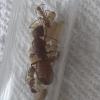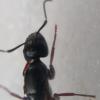This is a brutal time of year where I am constantly reading ant articles and posts, but bumming as everything is hibernating. Very much living vicariously through all the Australians posting. I finally broke down a couple weeks ago and put my P. imparis into hibernation. They aren't in the cooler, but in the basement in the low 50s. I wasn't going to hibernate them, but after reading Goldsystem's posts and having them re-lay post hibernation, it had me reconsider it. Worst case I'll recollect somet this season hopefully and try again.
So far lost a couple Lasius as I expected with so many, but everything so far still alive (though a long ways to go.) Happy to see my couple Aphaenogaster queens are still alive as I am very much looking forward to those this season, so hoping they continue to survive.
My Camponotus Myrmemtoma sp. lost the last of her workers, not sure why. They were feeding pre-hibernation, but lost all of them within a 2-3 week period just before and during hibernation, so not sure the deal. The queen I noticed has moved around a bit, and still alive. Once I lost all by one worker, I grabbed some larvae from the same species Camponotus that's hibernation in an enclosure outside (second year for them.) So curious to see if she can make it long enough for them to hatch and reboot. If not, guess I'll be looking for more queens of these in May.
If all these Lasius and Crematogaster survive and found successfully, I'm going to have to start an adoption thread for sure.


















